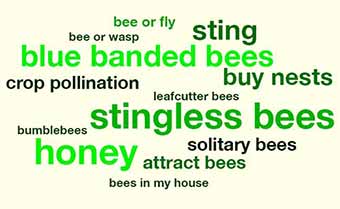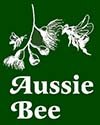PART 4. WHAT OTHER INSECTS WILL USE MY BEE HOTEL?
Aussie Bee > Bee Hotel Guide > Other Visitors
It is very common for Australian native solitary wasps to share a Bee Hotel. Similar to the solitary native bees, solitary wasps can sting, but are not generally aggressive as they do not have a queen or a large nest to defend.
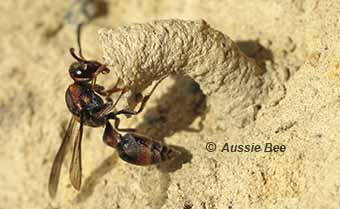
A solitary wasp with one of the clay tunnel entrances that they often build in Bee Hotels.
Wasps and bees have a major difference in their diet. Wasps catch insect prey to feed their young, whereas bees collect pollen. So if you have wasps nesting in your Bee Hotel, you should be able to see them bringing captured insects back to their nest.
Solitary native wasps are beneficial insects to have in a garden as they feed on caterpillars, aphids, cockroaches and spiders. So we are happy to have these wasps share our Bee Hotels with our local native bees.
Wasps that nest with clay
You will know that you have some solitary wasps nesting in your Bee Hotel, if some of the holes in your drilled timber blocks or bamboo canes are sealed with creamy clay plugs. Sometimes you will see a flat clay plug sealing a nest entrance. At other times, you may see an amazingly delicate clay funnel protruding from the nest hole.
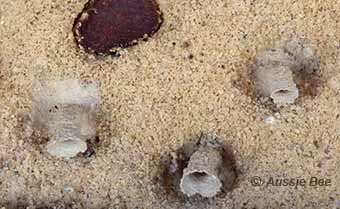
Three delicate mud funnels built by solitary wasps in a mud brick, underneath a red resin entrance built by a resin bee.
This kind of nest may be built by a Potter wasp (subfamily Eumeninae). This is a solitary native wasp that catches caterpillars as food for its young.
Wasps that nest with grass
Another distinctive type of nest seal that you may see in the drilled holes or bamboo canes of your Bee Hotel is a dense plug of long grass stems or grass seed heads.
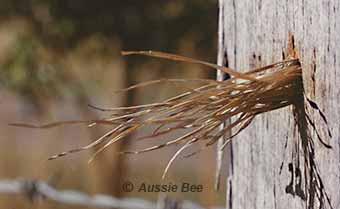
A solitary wasp has sealed the entrance of her nest in a Bee Hotel by plugging it with grass stems.
This kind of nest may be built by a Grass-carrying wasp (Isodontia). This is a solitary native wasp that catches crickets or grasshoppers as food for its young.
NEXT: Part 5. What should I do about pests and parasites?
Aussie Bee Guide to Bee Hotels
PART 1. What is a Bee Hotel and how can it help?
PART 2. How do I make a Bee Hotel?
PART 3. What bees will use my Bee Hotel?
PART 4. What other insects will use my Bee Hotel?
PART 5. What should I do about pests and parasites?

